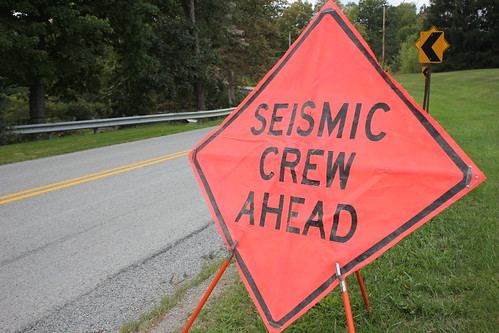Seismic Conference And Attendance Shift Predictions Part 2
Change is no longer an event that happens once in a blue moon.
It is the pace of today’s business. It is the drumbeat of the 21st Century.
The change that we currently see around us might one day be viewed as similar to what happened after the invention of the printing press or the internet. These are seismic shifts that will affect traditional conferences.
The Conference Of Today And Tomorrow
This is the second set of predictions about future conferences and shifting attendance.
So what will future conferences be like? And how should you as a meeting professional respond?
9. Conferences Will Focus On Improving Customers’ Job Performance As Opposed To Improving Delivery Of Information
Attendees and their employers are reframing the conference finish line from doing time sitting in chairs to on the job performance improvement says Dr. Will Thalheimer. Conferences will focus on improving their customers’ skills, not acquiring more knowledge. All the continuing education hours in the world don’t guarantee attendees learn anything applicable to the workplace. Many employers already know that certifications don’t equate to skills competency. Attendees may be able to pass a certification exam but can’t think critically, collaborate, problem solve and innovate. Performance improvement has reached a tipping point in the professional learning field says Thalheimer. That tipping point is now hitting the conference arena. More attendees and their supervisors care about performance improvement over compiling CEUs, receiving information or obtaining an incentive trip to the conference city.
10. Conferences Will Rethink The Micro Learning TED-Style Experience As The Primary Model For Sessions
Too many conference organizers think all conference education sessions should become shorter, micro-learning bursts like IGNITE, Pecha Kucha or TED. Micro-learning is not useful when participants are trying to understand complex issues, develop deep authentic learning or gain a better understanding of a complicated topic says education guru Sharon Boller. Instead, conferences will offer a variety of education sessions from short bursts to deep dives to full day immersions.
11. The Quality Of The Presenter Matters More Than The Size Of The Audience
Conference organizers will focus on securing speakers that can facilitate learning regardless of the room set or audience size. Audiences will favor authentic facilitation more than expertise. Conference organizers will also invest in helping industry presenters become better learning facilitators instead of dispensers of information. Having a smaller audience does not equal a better learning experience if the speaker isn’t learner-centric.
12. Simplified Focused Conference Experiences Will Compliment Attendees’ Lives, Not Compete With Them
Meeting professionals have assumed that the more the conference grows, the more it needs to offer. Over complicated and over-scheduled conference experiences can burn out attendees. After attending, they need a vacation from the experience. Some conferences offer so many programs and experiences that it overwhelms attendees. Conferences that focus on a few important programs and experiences so that attendees can connect, grow and reflect will emerge as the most effective. Simplified conference experiences will complement their customers’ lives, not overwhelm them.
13. Online Conference Experiences Will Supplement Face To Face Conferences
Sure livestreaming, hybrid and online conferences might become the experience for some who simply have no funds or access to the face to face experience. However, there is something about a human relationship that requires presence. Because communities of like-minded individuals will always gather, online experiences will supplement the conference. Yes online relationships are real, strong and true. However, they are not the greatest relationships people can have. Online connections ultimately drive the desire to meet face to face.
14. Online Conferences Become A Front Door To Face To Face Conferences, Not A Back Door
There’s no doubt that livestreaming and hybrid events have become a back door to some who are done with attending passive traditional conference experiences. While hybrid event experiences are a supplement for those who can’t get to the face to face conference, they are still an off ramp for those not fully committed to a profession or industry. Online conferences have the potential to become a front door for the curious, open-minded, peer-loving experiential professionals. And a conference’s online presence will be the first entry for conference prospects.
15. Conferences Will Be Smaller And Larger At The Same Time
Many might think that the mega-conference is dead. It’s not. Beyond convenience and hassle, size is really irrelevant to a conference’s effectiveness. There are bad big conferences and bad small conferences. Large conferences, that can effectively help attendees personalize their experience and find their tribe, will get larger. Likewise, many conference hosts (and their sponsors) will establish smaller, more intimate gatherings as attendees seek tighter connections and groups.
Hat Tips to author and leadership guru Carey Nieuwhof who wrote a series about shifting attendance patterns in society and faith institutions.
Which of these predictions have you seen in your own conferences recently? What predictions would you add to these 15?



Sorry I have to disagree with number 13 especially with regard to associations.They struggle and will continue to struggle with the balance between webcasting/live streaming and attending. Its a delicate balance, you want to provide the education to your members but you also want them to attend the meeting.
‘@Kathie:
Thanks reading and commenting.
What part of #13 do you not agree with? Can you expound on how you see it differently?
Kathie,
I also work for an association, but it’s small. The statewide membership tends to be older and more traditional, but in order to recruit and keep younger members I continue to push that organization to do more with the virtual world. The members of my county organization tend to be younger and more tech-savvy, and don’t relate to the state association because of this generational divide.
How do you engage younger members in your association? Or, better yet, how do you find ways for the different generations to engage together?